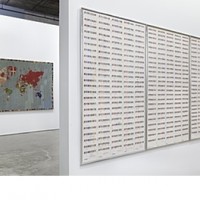-
Discord at the Dia Art Foundation Over Planned Sale of Artworks
11/11/2013
 Since 1974, the Dia Art Foundation has worked to support innovative contemporary artists. Over the years, the Foundation has commissioned groundbreaking works and mounted and maintained installations and exhibitions from New York to New Mexico to Germany. But a rift between some of its original founders and the Dia’s current leadership has led to litigation over the fate of some iconic works in the Foundation’s collection, and debate over the mission and future of the organization itself.
Since 1974, the Dia Art Foundation has worked to support innovative contemporary artists. Over the years, the Foundation has commissioned groundbreaking works and mounted and maintained installations and exhibitions from New York to New Mexico to Germany. But a rift between some of its original founders and the Dia’s current leadership has led to litigation over the fate of some iconic works in the Foundation’s collection, and debate over the mission and future of the organization itself.
Heiner Friedrich and Fariha de Menil Friedrich were part of a small group that founded the Dia in the 1970s, but Mr. Freidrich has not served on the Foundation’s board since the 1980s. Earlier this week, the pair filed a complaint in New York state court (Sup. Ct. N.Y. Co., Index No. 160379/2013), seeking an injunction to halt the Dia’s impending sale of a handful of works scheduled to be auctioned at Sotheby’s next week. The works, according to the New York Times, include pieces by Cy Twombly, John Chamberlain, and Barnett Newman, and may be worth as much as $20 million.
The complaint alleges, among other things, that the works at issue were “donated or loaned” to Dia by the plaintiffs, and “were to form permanent collections for the public.” They argue that selling these works to private bidders would “remove the works from public access and viewing in direct contravention of Dia’s entire intent and purpose and of plaintiffs’ arrangements and understandings with Dia in donating or loaning the subject works to Dia.” In fact, the complaint asserts that some of the artists themselves “forewent top dollar sales” in order to provide the plaintiffs with “some of their greatest works” based on the understanding that the works would remain accessible to the public. The Dia has declined to comment on the litigation to the Times, but has stated in the past that it plans to sell off some works in order raise money for growth and new acquisitions.
The founders argue that the works were given with the understanding that they would not be sold to private buyers. The complaint further alleges that certain works were only loaned (not gifted outright) to the Dia; if that allegation is proven, that would mean Dia does not actually own the works free and clear, and is not entitled to auction them. It is unclear what documentation exists between the parties; the complaint says that the plaintiffs “cannot at present locate” the documents memorializing the loans and donations.
Regardless of the outcome, this case stands as a cautionary tale to collectors and philanthropists who loan or donate artworks to museums and non-profit organizations (and a useful reminder to organizations who accept such works as well). Donors must understand and plan for the simple fact that, as organizations evolve over time, the organization’s mission, leadership, and priorities may shift or head in new directions. Any conditions that a donor wishes to place on a gift (for example, that it may only be sold under limited conditions) must be negotiated and memorialized at the outset, with the help of experienced legal counsel and a clear contract. Likewise, museums and other cultural institutions should ensure that they have written documentation of loans and gifts, along with a clear and binding contract addressing what options the organization has (and does not have) for dealing with or even disposing of a gift down the road. Moreover, as the Dia complaint observes, artists themselves may sell specific works (sometimes at below market price) to a museum or nonprofit in the expectation that the works will remain accessible to the public indefinitely; if this is truly an artist’s intent, he or she can take legal steps to try to preserve those goals. Contractual documentation must be created—and preserved—so that the parties’ rights are clearly defined, no matter how an organization evolves over the ensuing years and decades.
Art Law Blog
